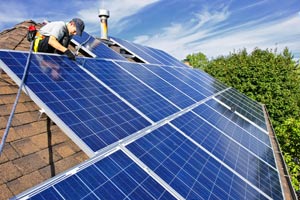

The current revisions to Germany’s solar subsidy policy consist mainly of subsidy amount changes and installation capacity limitations. As for subsidy adjustments, a transitional arrangement will be available for developers who submit planning applications before February 24; small systems installed prior to June 30 and large systems installed before September 30 will fall under the old subsidy conditions. In terms of monthly adjustments, the revised policy states that beginning in May, the FiT reductions will be a set percentage instead of a fixed amount – a 1% reduction per month, as opposed to the previous €15/kWh. Furthermore, changes have also been made to the market integration model. Beginning on January 1, 2013, rooftop systems up to 10 kW will only be subsidized for 80% of generated electricity, as opposed to the previous 85%; 90% of generated electricity will be subsidized for systems between 10 kW and 1 MW, while installations over 1 MW will be fully subsidized.
EnergyTrend believes these changes will benefit the stabilization of the German solar industry in 2012. As the new policy provides a transitional period for photovoltaic developers, the current wave of installations may continue until the end of Q3. Q4 demand will depend on the future direction of the new policy as well as investment returns. Looking beyond 2013, as the FiT reductions will be based on actual installation figures – the draft allows for a 29% reduction at most – vendors are currently leaning towards reducing capacity to sustain market price. Thus, EnergyTrend believes demand momentum will gradually decrease, and if the revised draft is passed, Germany’s photovoltaic market will see short-term gains but long-term losses.

Source: EnergyTrend
As for this week’s spot prices, according to EnergyTrend research, the market is currently still observing the developments in the European sector. Furthermore, as contract material supply is sufficient, many manufacturers have temporarily ceased spot market transactions, resulting in the continued decline of spot price. This week’s average price fell to $25.555/kg, a decrease of 2.05%. Affected by market rumors, buyers and vendors are still in disagreement over price. Average silicon wafer price fell only slightly – average multi-Si wafer price decreased by 1.64% to US$1.142/piece, while average mono-Si wafer price was US$1.568/piece, a decline of 1.51%. This week’s average solar cell price was US$0.494/Watt, a 1.20% decrease, but based on the current trend, solar cell price will continue to fluctuate in this range in the short term. As for solar modules, most Taiwanese makers are at fully loaded capacity, and price quotes were flat. Chinese manufacturers, on the other hand, were impacted by decreased demand from European clients as well as the fact that the U.S. has not reached a final decision on anti-dumping tariffs – price quotes decreased, and this week’s average module price was $0.831/Watt, a 1.66% reduction.